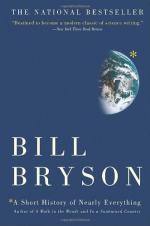|
This section contains 1,061 words (approx. 3 pages at 400 words per page) |

|
Part 3, Chapter 9 Summary and Analysis
Caltech physicist Richard Feynman has pointed out that the most important scientific discovery is that everything is made of atoms. Solid objects, water and even seemingly empty air are composed of tiny particles called atoms. Chemists usually think in terms of molecules, which are composed of two or more atoms. Molecules are so tiny that an object the size of a sugar cube may contain 45 billion billion molecules. Half a million atoms set side-by-side could fit in the width of a single human hair.
Besides being very abundant, atoms are also exceedingly durable. When an organism dies, its atoms disassemble and form new combinations such as a leaf, a drop of water or another person. Some experts estimate that each human contains up to a billion atoms from William Shakespeare to Genghis Khan, Beethoven and Buddha. By current estimates...
(read more from the Part 3, Chapter 9 Summary)
|
This section contains 1,061 words (approx. 3 pages at 400 words per page) |

|




